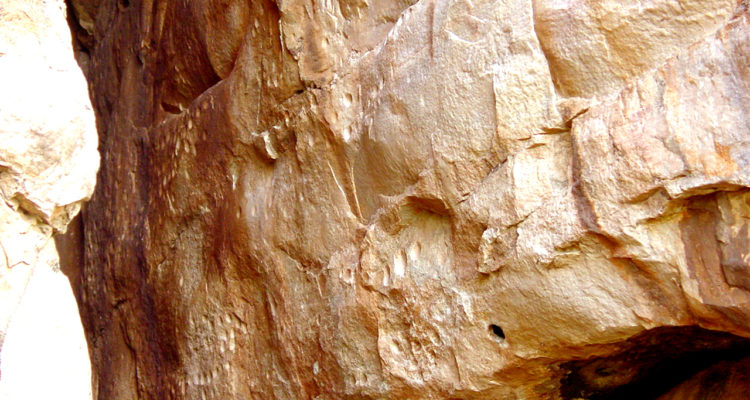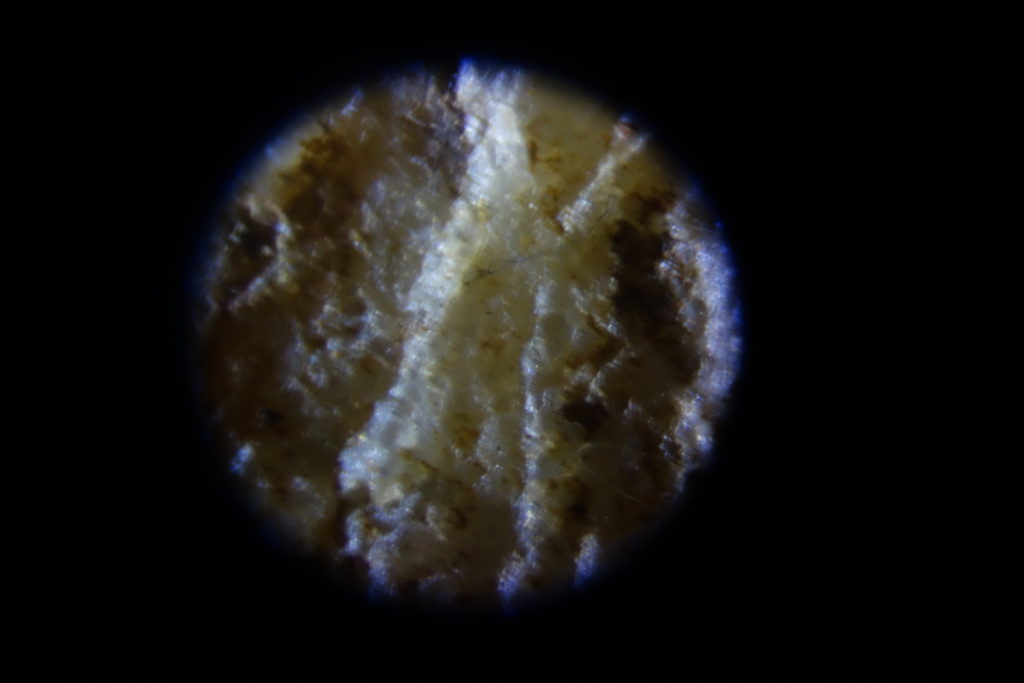In India nearly all work in rock art has been traditional in nature until now; i.e. it has been preoccupied with meaning and interpretation. Since these are inaccessible to a scientific mode of discourse and analysis, progress has been inadequate: there is a great deal of unreliable narrative but very little of substance. Yet India possesses one of the largest rock art concentrations in the world, with vast numbers of sites of both rock paintings and petroglyphs. Indeed, some of the most spectacular and globally most important rock art is in India, such as the earliest sites currently known in the world (Fig. 2-7). Therefore India faces the need to adopt advanced rock art management practices based on scientific understanding of deterioration processes and on a deep awareness of the needs of rock art to survive into future centuries.
India possesses numerous scientific institutions and laboratories that are capable in collaborating in the scientific study of rock art, including agencies engaged in a number of dating techniques and analytical methods. To date they have hardly been engaged in the area of rock art analysis, despite the great need for involving their facilities and capabilities. Therefore there is a great need for an agency that provides a nexus between traditional or archaeological rock art research and the scientific community of India. By the same token there is a distinct need for this agency to be closely allied to the international research community dealing with rock art worldwide.
Need for the establishment of an Indian agency entirely dedicated to the introduction of Rock Art Science
A number of scientific initiatives have been undertaken in Indian rock art studies, but these have been isolated instances and they tend to be dominated by foreign scholars in an “opportunistic” pattern. There is a distinctive need for the establishment of an Indian agency entirely dedicated to the introduction of scientific methodology to Indian rock art research, an agency that collaborates closely with all relevant science agencies in the country while at the same time co-operating with the pertinent international agencies. In a preliminary sense, such efforts already exist. The Rock Art Society of India (RASI) is a founding member of the International Federation of Rock Art Organisations (IFRAO) and as such is closely allied with the global community of rock art researchers. However, Indian rock art science does not have a “home” dedicated to the highest excellence in rock art studies. There is no agency solely responsible for the scientific study of Indian rock art, one of the three largest national rock art corpora in the world, and one of the most important. This proposal is about correcting that situation.



Leave a Reply